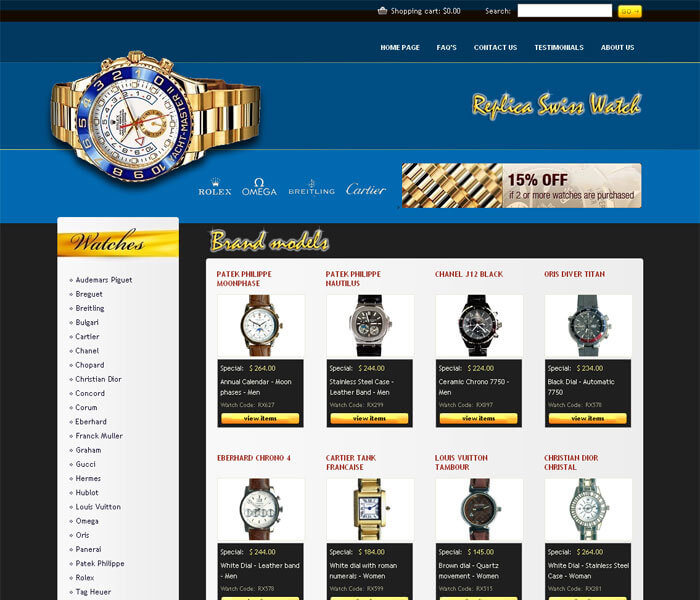Part two
Cybercounterfeiting, particularly of watches, can be defined as the simultaneous presence online of different bodies which are directly or indirectly involved in illicit trade in counterfeit branded goods. Retail sites trading only in counterfeit goods openly propose “quality” replicas of luxury watches, or a brand-new Rolex at 90% less than the retail price at an authorised Rolex dealer. They all have one thing in common: they are illegal sites, hosted by Asian e-tailing platforms, and are spreading like wildfire.
These illicit sites have dozens of URLs, all linked to the same structure. If the authorities block one address, a dozen new ones will appear, all converging on the illegal site. Many of these sites propose all types of product: don’t be surprised to see sporting goods sold alongside luxury watches, perfume, even cigarettes. Counterfeiting follows trends and these sites too come and go as fashions change: telephones, sporting goods, perfumes and watches are the best examples.
Authorities at a loss
A large proportion of the products for sale don’t exist in the brand’s official catalogue. Photos are often dire quality and those that do “catch the eye” are in fact high-definition scans of illustrations from the legitimate brand catalogues. There are no detailed descriptions of the watches and prices are abnormally low: 70% to 90% less than retail price. The sites don’t issue invoices, don’t give a manufacturer’s guarantee, and don’t offer secure transactions, with a secure transfer protocol (https) and a recognised payment service.
These sites excel in using keywords such as watch, counterfeit or replica, or words associated with leading luxury watch brands, to get high ranking in listings by search engines such as Google. They have frequent recourse to cybersquatting, where an illicit website operator buys, as a search engine keyword, a trade name or brand name for which they have neither ownership nor intellectual property rights. The holders of these rights, together with national organisations such as police and customs engaged in the battle against counterfeiting, face an arduous task as the sites are anonymously-owned or registered under fake identities. Most are hosted in China.
Investigators therefore have little chance of formally identifying counterfeiters. Legal proceedings are also jeopardised: a request to execute a rogatory commission is time-consuming, costly and has minimal hope of success when faced with a complex and impenetrable Chinese justice system whose aim is to defend national interests.
Rolex, Cartier or Omega return listings that give high ranking to counterfeit sites, sometimes even above brands' official websites.
All segments are concerned
The vast majority of reputable and prestigious watchmakers are concerned by illicit use of their brand name, as potential customers are driven to fake watch sites as a result of cybersquatting and keyword-buying techniques. LVMH, which owns watch brands Tag Heuer, Zénith and Dior, obtained a court ruling banning sponsored links on Google. Searches by potential customers using keywords such as Rolex, Cartier or Omega return listings that give high ranking to counterfeit sites, sometimes even above brands’ official websites.
A comparative survey of websites specialising in counterfeit watches (Fédération de l’Horlogerie (France) – Jully 2009) shows that brands in every segment are victims of illicit reproduction of their name or models, from entry-level brands (Swatch, Rado, Tissot) to luxury brands (Tag Heuer, Rolex, Cartier, Breitling, Omega) and Fine Watch brands (Patek Philippe, Jaeger-LeCoultre, Blancpain, Breguet, Vacheron Constantin, Audemars Piguet). Certain Chinese e-tail platforms propose counterfeit products by as many as 66 different brands. Some sites, such as watcheslux.com, propose several hundred, if not thousands of models by “Rolex,” “Cartier,” “Tag Heuer” or “Breitling” when the brand’s official catalogue features a few dozen at most.









